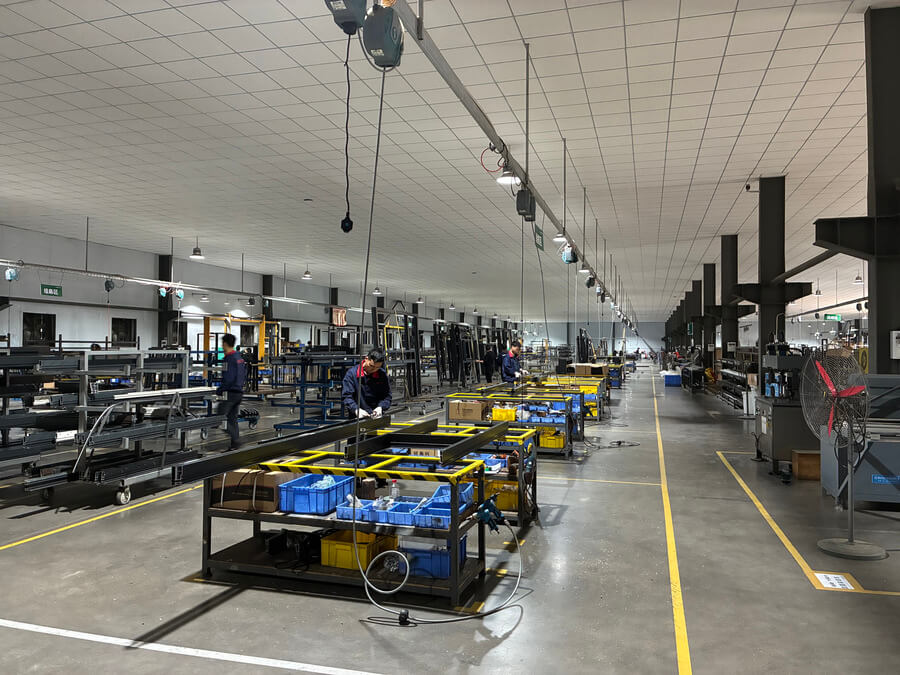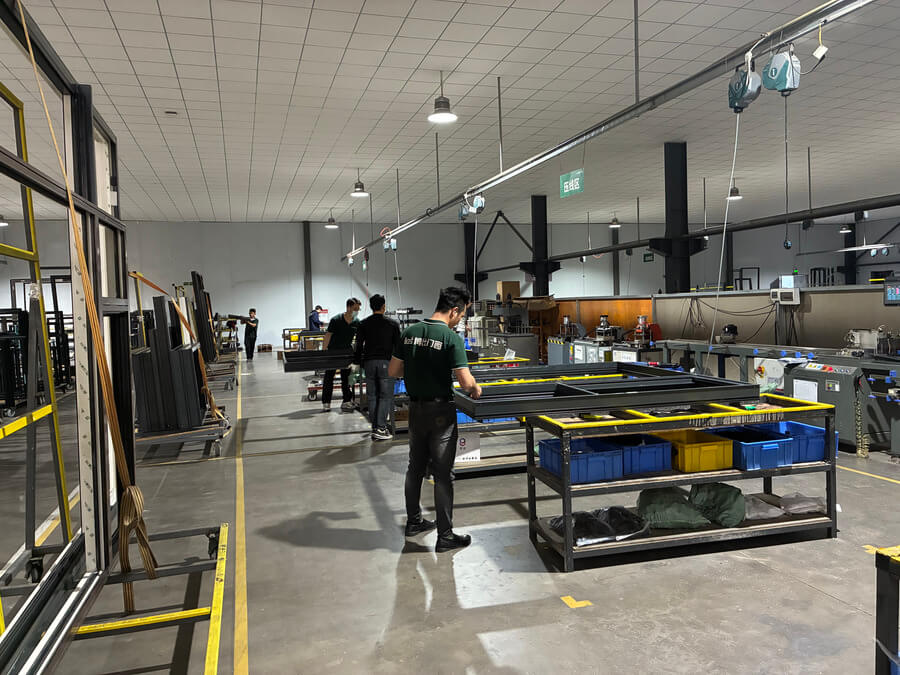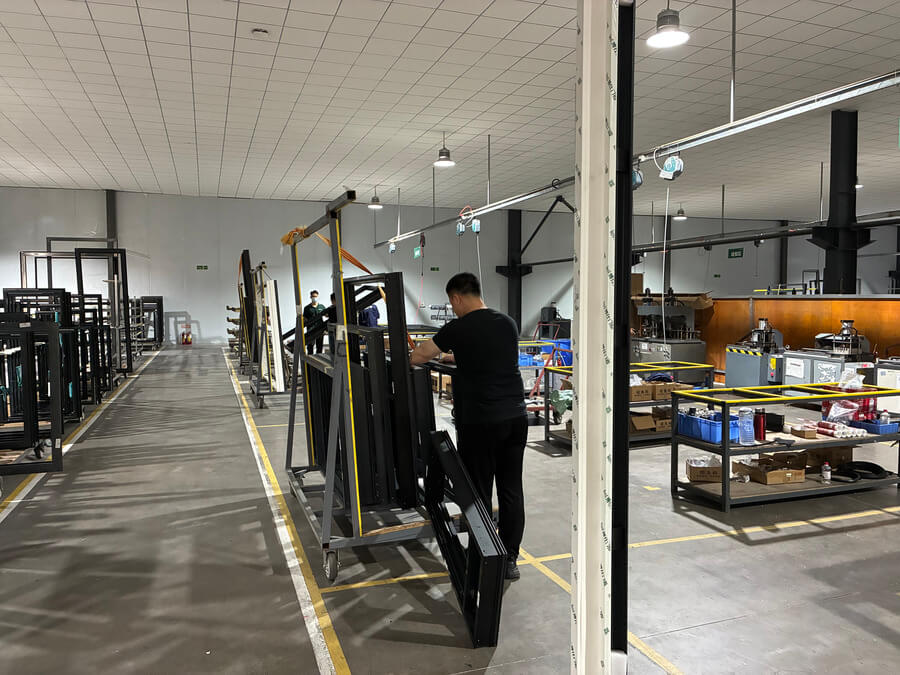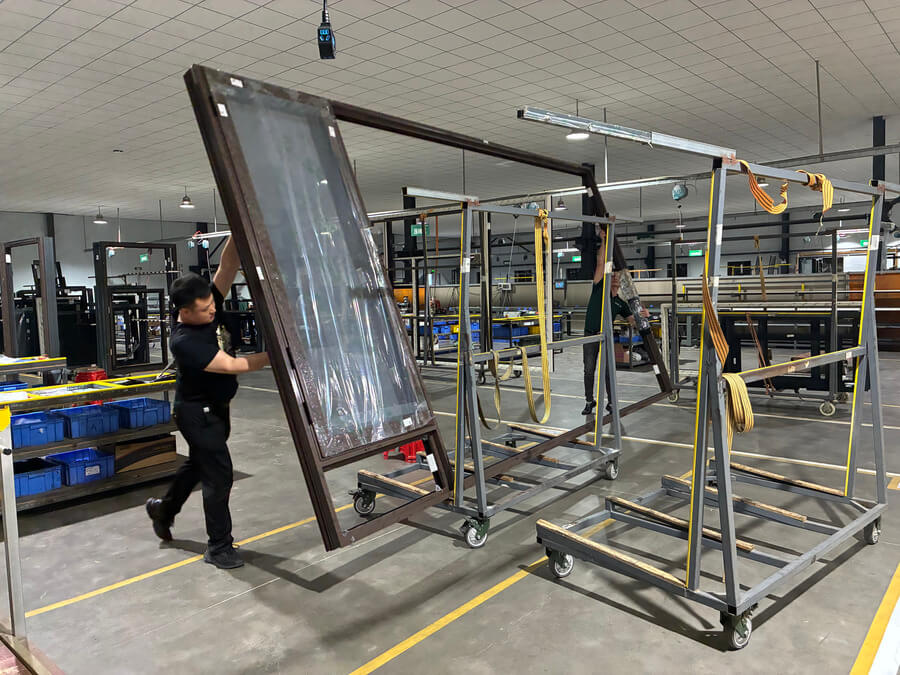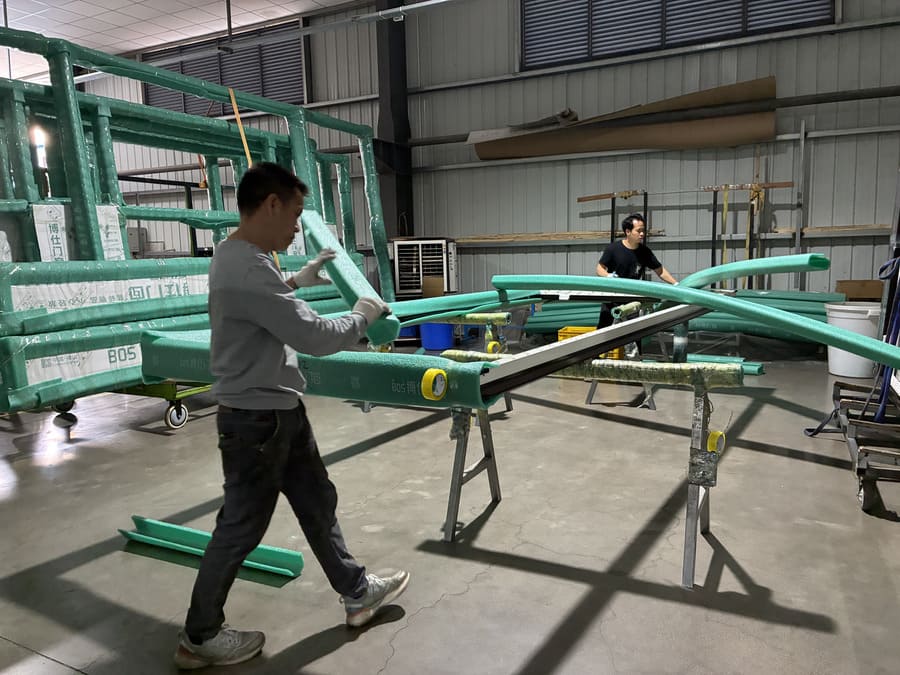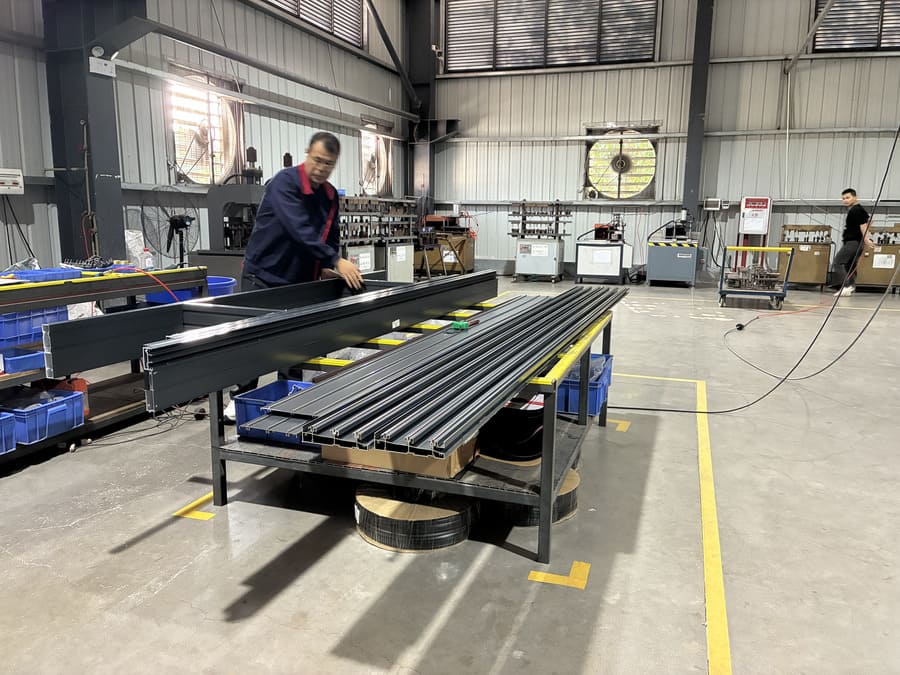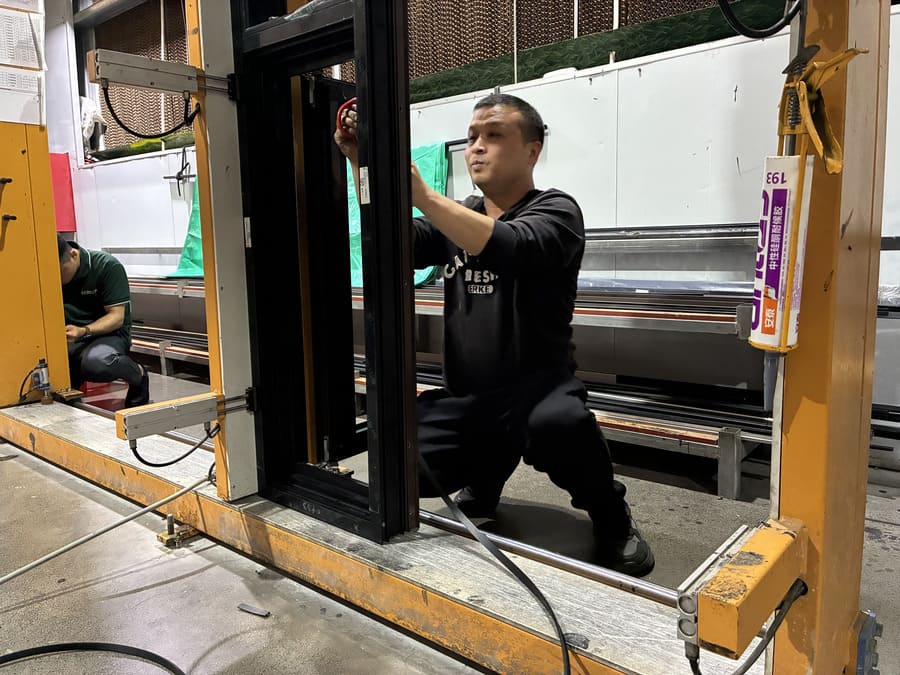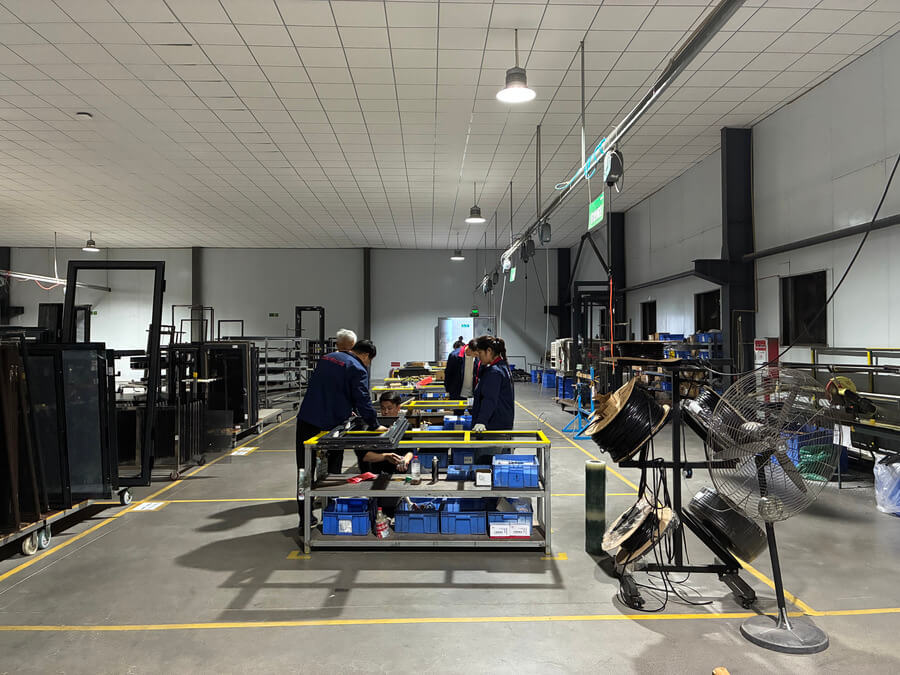Aluminium Windows: Climate Fit, Pros, and Cons

Homeowners across Australia usually pick aluminium windows are a common choice in Australia. This is because these windows offer durability and modern aesthetic appeal and require minimal upkeep. Aluminium window frames are good for dry, coastal, and temperate climates, especially with double glazed windows and insulated frames. They’re great for modern homes that need strong structure and slim frames. But in cold climates, you’ll need to consider secondary glazing or energy-efficient upgrades to stay warm
Pros
- Durability and Strength: Aluminium window frames are quite durable. They have strong structural properties and resistance to weather conditions. These windows maintain their shape and resist damage from high winds and rain, as well as UV radiation, thus making them perfect for the harsh weather conditions.
- Slim Profiles and Modern Aesthetics: Aluminium enables the construction of slim frame structures which maximize glass area to deliver modern aesthetics while enhancing natural light penetration and outside visibility.
- Low Maintenance: These windows demand minimal maintenance levels because users only need to clean them periodically, while aluminium window frames require no painting or sealing, unlike timber.
- Recyclability: Aluminium exists as a sustainable material that allows 100% recycling to support environmentally friendly building methods.
Cons of Aluminium Windows
- Natural Insulation: Aluminium is a good conductor of heat and cold. The absence of a thermal break makes aluminium windows susceptible to heat gain in summer and heat loss in winter, which results in higher energy costs unless you install double glazing or low-E glass.
- Condensation Issues: Aluminium windows in cold climates tend to develop more condensation than uPVC frames. The resulting moisture accumulation will reduce energy efficiency and create potential water damage unless proper window ventilation is established.
- Higher Upfront Cost: When purchasing windows, aluminium versions usually cost more than uPVC models, particularly when you include thermally broken frames and safety glass and double glazing features.
uPVC Windows: Climate Fit, Pros, and Cons

Australian homeowners mostly choose unplasticised polyvinyl chloride windows because these windows provide better energy efficiency and climate resistance features. UPVC window frames are best for cooler climates like Victoria and Tasmania, where insulation is key. But high-quality uPVC products for the Australian climate can perform well in hotter areas too, especially with double glazing and low E coatings to block UV and keep the cool air in.
Pros of uPVC Windows
- Superior Insulation: The main advantage of these windows lies in their outstanding thermal insulation properties. The insulation properties of aluminium window frames differ from uPVC windows because the latter blocks heat transfer while aluminium conducts temperature changes. The combination of double-glazed windows with uPVC window frames creates optimal temperature control inside your home, which leads to lower utility costs.
- Noise Reduction: UPVC materials combined with double glazing provide substantial noise reduction that works best for residences in urban or high-traffic areas.
- Good for Energy Efficiency: uPVC window frames deliver superior energy efficiency through their airtight design and insulation, which complies with Australian standards when installed with low E glass.
Cons of uPVC Windows
- Less Customizable: UPVC window frames come in various colors, but they lack the modern appearance of aluminium. The traditional appearance of UPVC may not meet your needs if you prioritize window style.
- May Warp in Extreme Heat: A lower-quality uPVC frame may experience warping when exposed to extreme heat despite its intended durability and inadequate compliance with local climate standards.
- Not Ideal for Large Panes: Large panes in fixed windows or casement windows need internal reinforcement because uPVC lacks the structural strength of aluminium. This can have a significant impact on design options.
Energy Efficiency Comparison


The energy efficiency of uPVC windows surpasses most other types when installed in Australian climates. The non-conductive material of the frame provides an effective seal against both hot and cold air, which maintains indoor temperature stability. The design of uPVC double-glazed windows allows them to minimize energy expenses because they decrease both winter heating costs and summer cooling expenses.
Aluminium frames are naturally conducive, although they possess strength along with low maintenance requirements, but they conduct electricity by nature. The absence of thermal breaks in these windows allows both heat and cold to pass through easily, thus reducing their energy-saving capability. These modern thermally broken aluminium windows perform better than singled glazed windows and can be used in Australian areas with moderate climates.
Selecting the right type of glass directly enhances operational effectiveness. The combination of double glazing with low E glass and secondary glazing uses two panes along with insulating materials to minimize heat transfer and block UV rays. The upgrades work with casement windows together with fixed windows to enhance comfort levels and reduce expenses.
Durability & Maintenance Across Australian Conditions

Aluminium windows and uPVC windows each have specific benefits for durability purposes within Australia’s diverse climatic conditions. Aluminium windows are common for their strong nature and long lifespan. These windows maintain their integrity against extreme sunlight exposure, heavy precipitation, and powerful gusts. This makes them suitable for coastal zones and areas with strong winds. The surface of these windows may develop corrosion or oxidation marks after extended periods of use, particularly in salty air environments.
UPVC windows are durable because they resist rusting and rotting while withstanding moisture and UV damage. The cooler and temperate climate of Australia makes UPVC frames function optimally. The cheaper uPVC products become brittle and discolored when exposed to high UV conditions in extremely hot climates unless they include UV-stabilized formulations. Modern uPVC windows in Australia now feature UV-stabilization, which improves their resistance to climatic conditions.
The maintenance requirements for uPVC windows make them superior because they need only basic cleaning with soap and water. Aluminium windows require regular inspections along with paint touch-ups and seal maintenance based on their finish and frame composition. Homeowners who want to reduce future expenses and time investment should select UPVC as their cost-effective window solution with low maintenance requirements.
Aesthetic & Design Flexibility


Aluminium windows give a modern design through their streamlined modern framework. The thin design of aluminium frames enables extensive glass surfaces, which permit greater daylight entry while creating modern, minimalistic aesthetics for your home. Aluminium window frames enable complete color customization since powder-coating technology supports any shade and woodgrain finish options. Aluminum frames can be customized to match any home style because they support various exterior and interior design schemes, including industrial, coastal, and contemporary.
Architects prefer aluminium windows because their ability to create custom shapes and sizes provides ultimate design flexibility. UPVC windows may have wider, thicker frames, but they’re not style-less. Modern uPVC frames come in many colours, not just white. Wood-effect finishes are available, and while they may not have the sharp lines of aluminum, they still look clean and classic and suit suburban and traditional Australian homes. The material itself limits ultra-slim profiles, which can reduce the amount of glass visible compared to aluminum.
But if thermal performance and low energy bills are your top priority and you don’t care about ultra-modern looks, uPVC’s a good balance of form and function. But if design flexibility and architectural styles are key to your build or renovation, then aluminium is suitable as it offers more visual impact and finish options to suit the changing trends in the Australian housing market.
Aluminum vs UPVC Windows: Best Choice for Different Regions in Australia


The right material choice for Australian homes varies based on their climatic conditions and regional location. Aluminium windows stand as the best choice for Queensland and northern New South Wales coastal and tropical areas because they resist corrosion and last longer. Powder-coated aluminium shows exceptional durability when exposed to salty air and maintains its stability through severe weather conditions.
The arid hot climate of Western Australia and central Australia demands UPVC windows as the optimal selection. The good insulation properties of these windows minimize inside temperatures while keeping cool air inside which lowers air conditioning demands. The efficiency of these windows improves when paired with double glazed glass units because they simultaneously reduce noise and enhance energy conservation.
The best window material for colder southern regions, including Victoria and Tasmania, and parts of South Australia, is uPVC. The combination of uPVC and double glazing creates powerful insulation that helps decrease winter heat loss inside homes throughout these areas. The combination results in decreased heating expenses while maintaining better indoor comfort for all seasons.
Conclusion
Aluminium or uPVC, the choice is yours. Ultimately, it comes down to your needs, local climate, design style, and budget. Aluminium windows offer strength, slimmer profiles and unmatched design flexibility, perfect for coastal, modern or high-end homes. UPVC windows are cost-effective, have high thermal insulation, and require minimal maintenance, especially in extreme temperatures or where energy efficiency is top of the list.

At Bowindors, we know every home is different. That’s why we offer expert advice and high-quality window solutions. Our team is here to help you make a smart, climate-conscious investment that fits your style and stands the test of time. Get in touch with Bowindors today to get started!







